Diptera.info :: Identification queries :: Diptera (eggs, larvae, pupae)
|
Aquatic Ephydridae Larva South Africa part 2(with pupae) => Brachydeutera
|
|
| Johanan Viljoen |
Posted on 13-06-2013 15:25
|
|
Member Location: Richards Bay, South Africa Posts: 21 Joined: 14.11.12 |
Good Afternoon, How are you? Thank you very much to everybody who posted on my other thread about these larvae. Since then, several of them have successfully molted into pupae, and I have gained some extra information. It has come to light that these larvae are algophagous, and are full sized when 6.5-7 mm long. To my untrained eye, all the larvae that I have collected seem the same; however, two different pupae have emerged from the larvae. One larva pupated on the side of the container, above the water line, and has no visible breathing tube. All the others, however, turned into aquatic puparia with(I think) breathing tubes. Many thanks to Atylotus for identifying these larvae to Family level. I am hoping that it may be possible to narrow it down further, though. Is there any way to do so? Thank you in advance for your assistance, Johanan E. Viljoen Pupa, Aquatic  Pupa, terrestrial 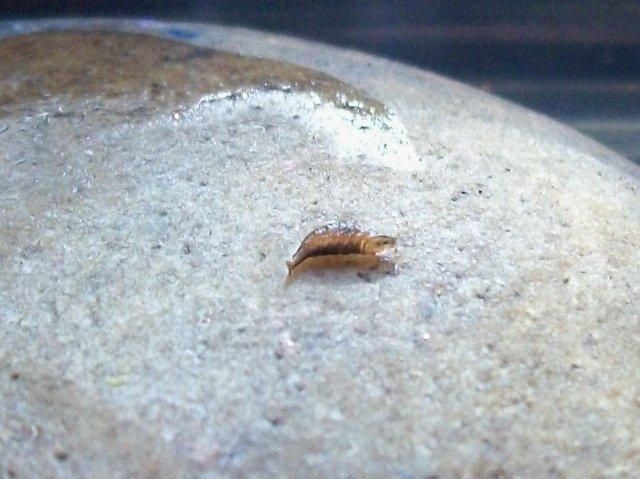 Larva, side view 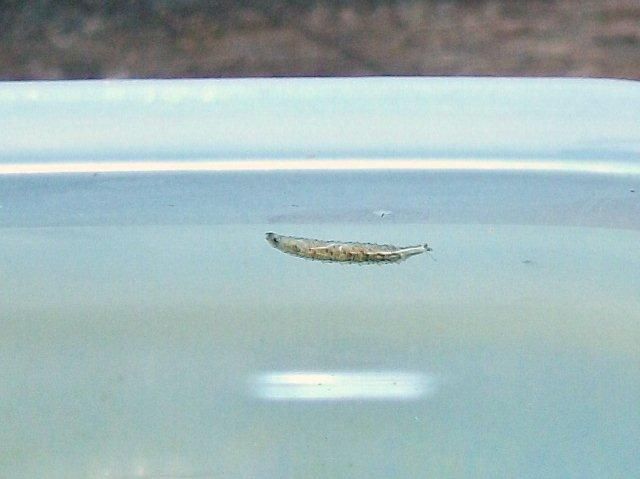 Larva, Aerial View 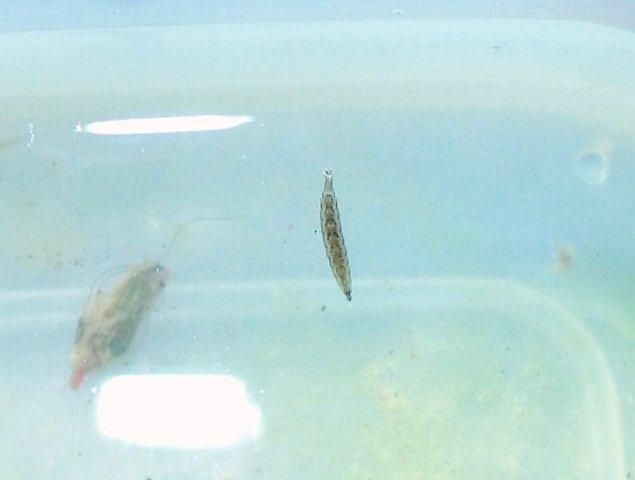
Edited by Johanan Viljoen on 15-06-2013 20:25 |
|
|
|
| atylotus |
Posted on 13-06-2013 19:14
|
|
Member Location: Amsterdam, NL Posts: 1166 Joined: 29.05.09 |
Hi Johanan Very intersting pupa indeed of this Ephydrid species. The long and somewhat pointed pair on the left are the anterior spiracles, the short and blunt pair on the right are the posterior spiracles and have (I think) more of a breathing function than this long anterior spiracles. I have once seen a drawing of a pupa almost similar as yours, but I can't remember where, I think in Ferrars' breeding guide or in Hennigs monograph, but a copy is in my lab (and now I'm at home). The first genus that came into my mind was Brachydeutera, but not sure if this is a southern hemisphere genus. The best way to know for sure is to breed them to the adult stage and keep the adult alive for at least 1 day, for the wings to unfold and harden. In fact, pupa are more easier to breed than larvae, for they don't eat. I will have a look tomorrow, I'll keep you posted. By the way, I'm not familiar with adult flies  |
|
|
|
| Johanan Viljoen |
Posted on 13-06-2013 20:52
|
|
Member Location: Richards Bay, South Africa Posts: 21 Joined: 14.11.12 |
Hi Atelotus, Thank you very much for your reply. It is indeed a very interesting Pupa, I have never seen anything like it. Thank you for the extra information on the anatomy of the pupa. I am new to studying Diptera(purely a hobby at present) and any information that I gain is useful to me. Literature on South African Diptera is hard to come by, unless it is a broad description of a family or Genus. So, thank you for taking the time to explain things so clearly. I am planning on raising the pupa to adulthood... I will take photos to post on the forum. Hopefully, between your pupal analysis, and another's analysis of the adult we can get a conclusive identification. Thank you again, Johanan |
|
|
|
| Tony Irwin |
Posted on 13-06-2013 22:34
|
|
Member Location: Norwich, England Posts: 7320 Joined: 19.11.04 |
I agree with Atylotus - these are Brachydeutera. Three species are known from South Africa, and others from the Afrotropical Region.
Tony ---------- Tony Irwin |
|
|
|
| atylotus |
Posted on 14-06-2013 09:16
|
|
Member Location: Amsterdam, NL Posts: 1166 Joined: 29.05.09 |
I have found a few drawings of Brachydeutera, also having these long anterior spiracles. I haven't seen this in any other genus, so apparently this is typical for this genus (with known described species). Drawings in tsalolikhin (1999) is a Russian species and the ones in Ferrar(1989) is from other countries.
atylotus attached the following image: 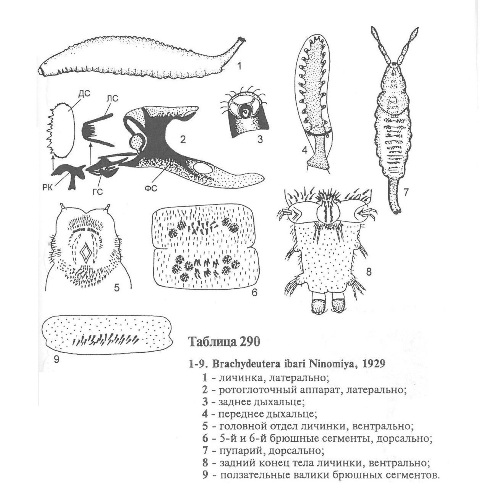 [75.55Kb] Edited by atylotus on 14-06-2013 09:17 |
|
|
|
| atylotus |
Posted on 14-06-2013 09:18
|
|
Member Location: Amsterdam, NL Posts: 1166 Joined: 29.05.09 |
and from Ferrar (1989)
atylotus attached the following image: 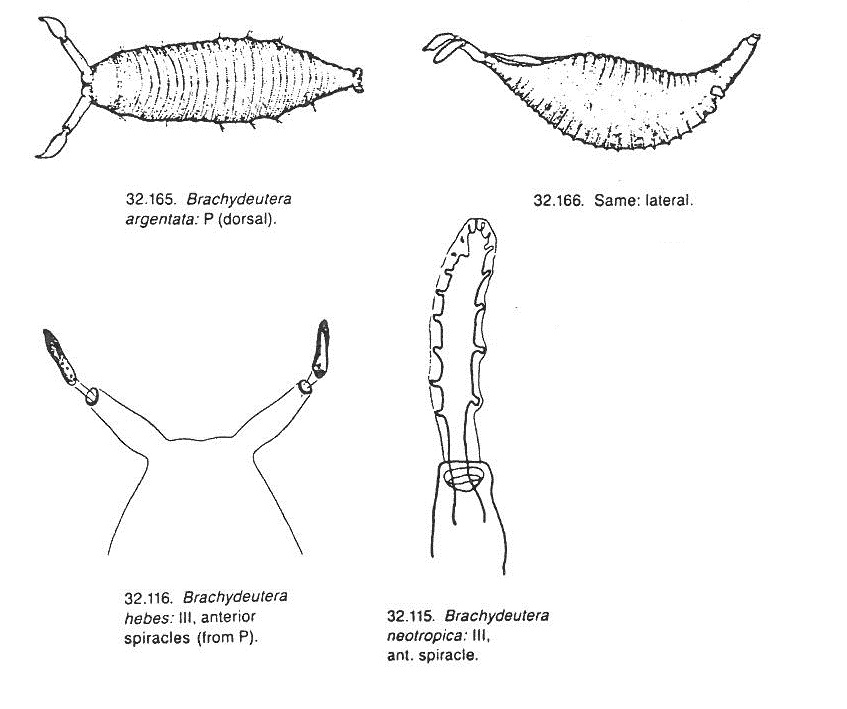 [91.5Kb] Edited by atylotus on 14-06-2013 09:18 |
|
|
|
| Johanan Viljoen |
Posted on 15-06-2013 16:53
|
|
Member Location: Richards Bay, South Africa Posts: 21 Joined: 14.11.12 |
Good Evening. Thank you for the pictures Atylotus, they match up perfectly with the actual pupa. And, thank you Tony for the extra information. Can you by any chance tell me what those three species are? The first imago emerged yesterday morning, and I did take pictures, but it may be a while before I can upload them. Thank you again for all the assistance, I'll update the photos as soon as possible. It is a beautiful gray fly with white abdominal bands. and red eyes. |
|
|
|
| Tony Irwin |
Posted on 15-06-2013 21:39
|
|
Member Location: Norwich, England Posts: 7320 Joined: 19.11.04 |
brunnea, munroi, pleuralis
Tony ---------- Tony Irwin |
|
|
|
| Johanan Viljoen |
Posted on 16-06-2013 15:06
|
|
Member Location: Richards Bay, South Africa Posts: 21 Joined: 14.11.12 |
Thank you very much. |
|
|
|
| Johanan Viljoen |
Posted on 23-06-2013 17:53
|
|
Member Location: Richards Bay, South Africa Posts: 21 Joined: 14.11.12 |
Finally. The adult. Sorry for bad picture quality, it was really small.  I will be posting photos of some terrestrial larvae soon, thank you for all the help with the aquatic ones. Sincerely, Johanan |
|
|
|
| Jump to Forum: |












